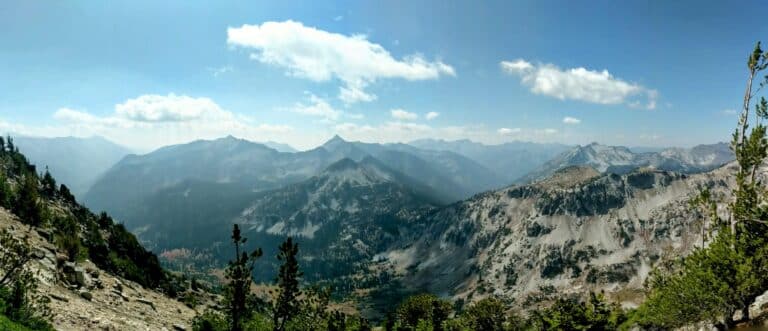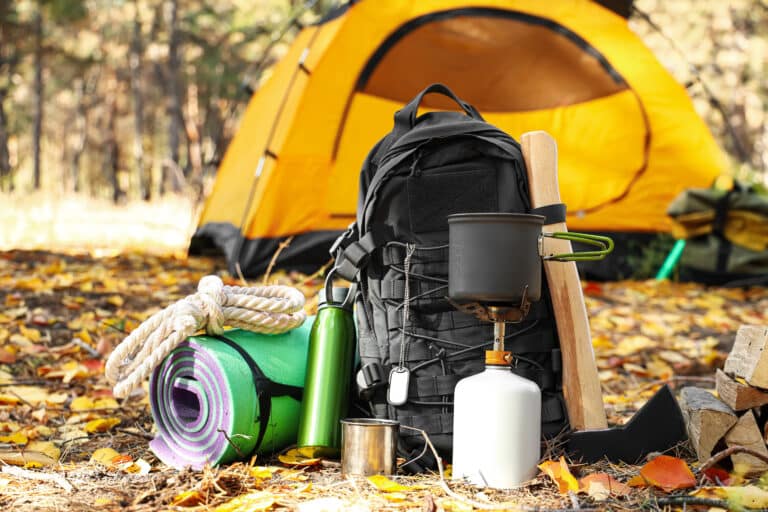US National Parks in Winter: Discover the Unique Charm
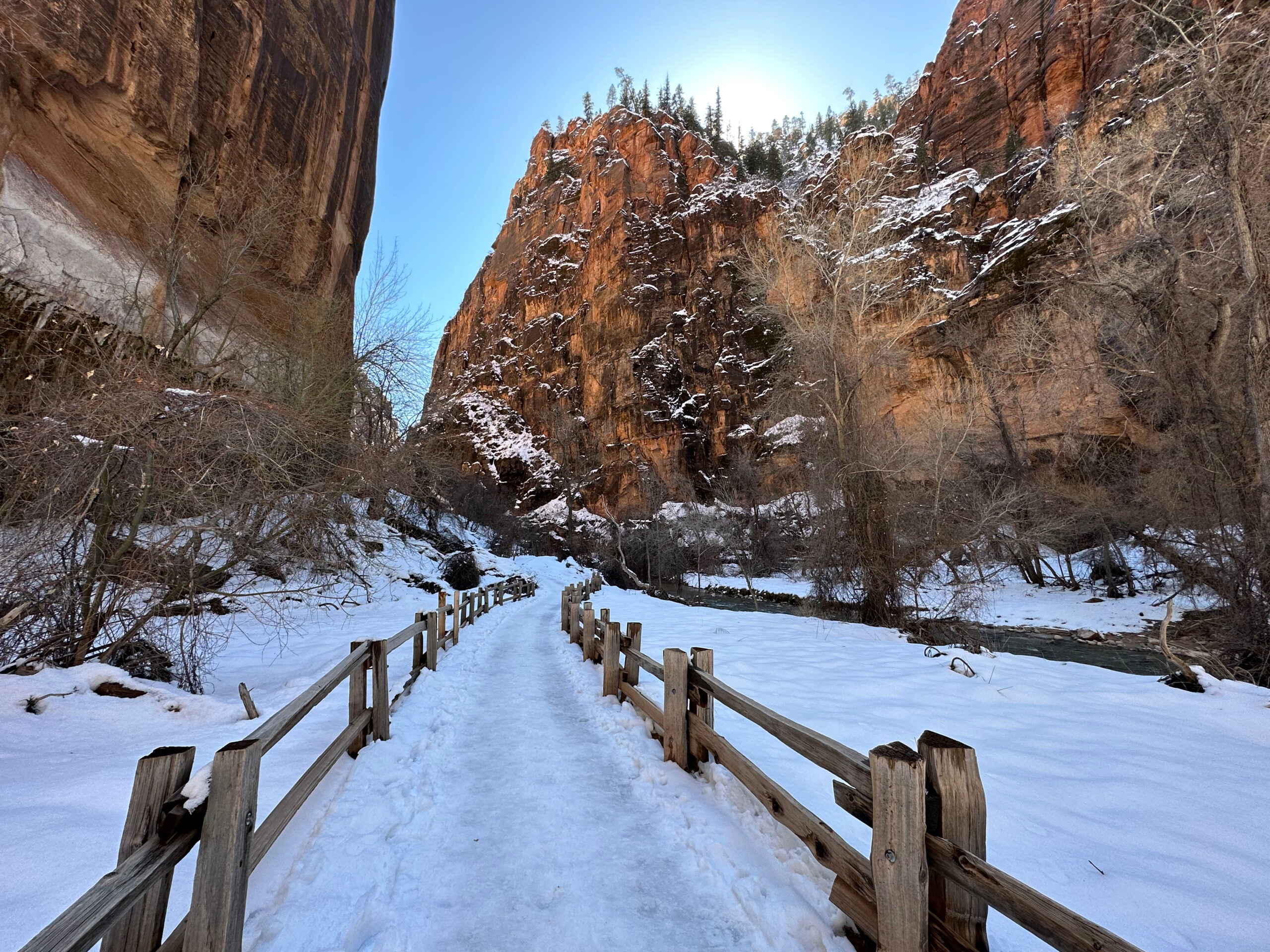
Our content may include affiliate links, through which we earn a small commission on purchases. Want to learn more about us? Read here.
Winter transforms several iconic US national parks in the winter, inviting visitors to experience a unique and enchanting perspective of nature’s beauty. Among the best winter destinations are Yosemite National Park in California, Yellowstone National Park stretching across Wyoming, Montana, and Idaho, Rocky Mountain National Park in Colorado, and Zion National Park in Utah.

During this season, these parks unveil a picturesque snowy landscape that captivates the senses. From the serene snow-covered vistas to the crisp mountain air, winter offers a perfect backdrop for a variety of outdoor activities such as snowshoeing and cross-country skiing.
Moreover, the opportunity to witness wildlife against the white canvas of snow and the chance to explore famous sites with a sense of tranquility make winter visits to these parks an unforgettable experience. This guide will delve into the unique allure of each park during winter, highlighting the reasons why they stand out as must-visit destinations in the colder months.
Yosemite National Park
Yosemite National Park is a remarkable destination to visit during the winter months due to several compelling reasons:
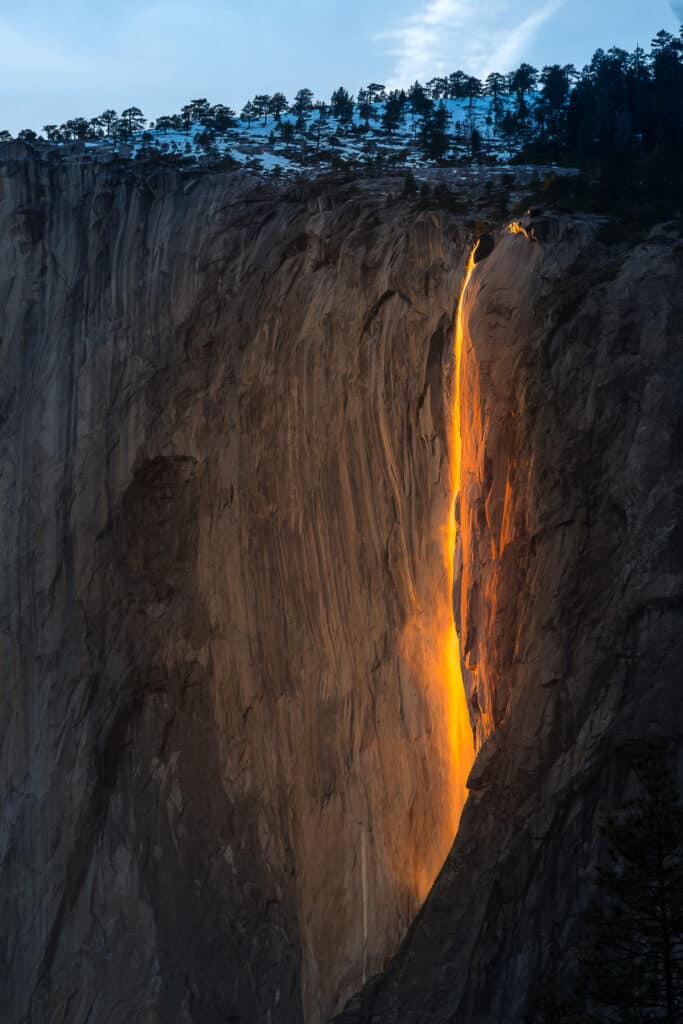
- Breathtaking Winter Scenery: Yosemite’s iconic landscapes take on a magical quality in winter. The park is transformed into a winter wonderland with snow-covered mountains, frozen waterfalls, and frosted trees, providing a stunning and serene environment for visitors.
- Crowd Reduction: Compared to the busy summer months, Yosemite is significantly less crowded in winter. This allows visitors to enjoy the park’s beauty in a more peaceful and intimate setting, enhancing the overall experience.
- Outdoor Activities: Winter in Yosemite offers adventure enthusiasts a range of outdoor activities. Visitors can partake in activities such as snowshoeing, cross-country skiing, ice skating, skiing, snowboarding or alpine touring. The park’s diverse terrain provides ample opportunities for beginners and experienced adventurers.
- Photographic Opportunities: The soft, diffused winter light and the contrast of snow against the park’s natural features create exceptional photographic opportunities. Photographers can capture stunning vistas, frozen waterfalls, and unique wildlife against the backdrop of a snowy landscape.
- Unique Wildlife Sightings: Winter brings out a different side of Yosemite’s wildlife. Visitors might have the chance to see animals such as mule deer, bighorn sheep, and coyotes against the pristine snow, providing excellent wildlife-watching opportunities.
- Access to Iconic Sites: While some areas of the park are closed or limited in accessibility during winter, iconic sites like Yosemite Falls and Half Dome remain accessible. These attractions are often more serene and photogenic without the summer crowds.
- Cozy Lodging and Fireside Atmosphere: Yosemite offers a range of cozy lodging options, from historic hotels to rustic cabins, where visitors can relax by the fire after a day of outdoor activities. The peaceful ambiance adds to the charm of a winter visit.
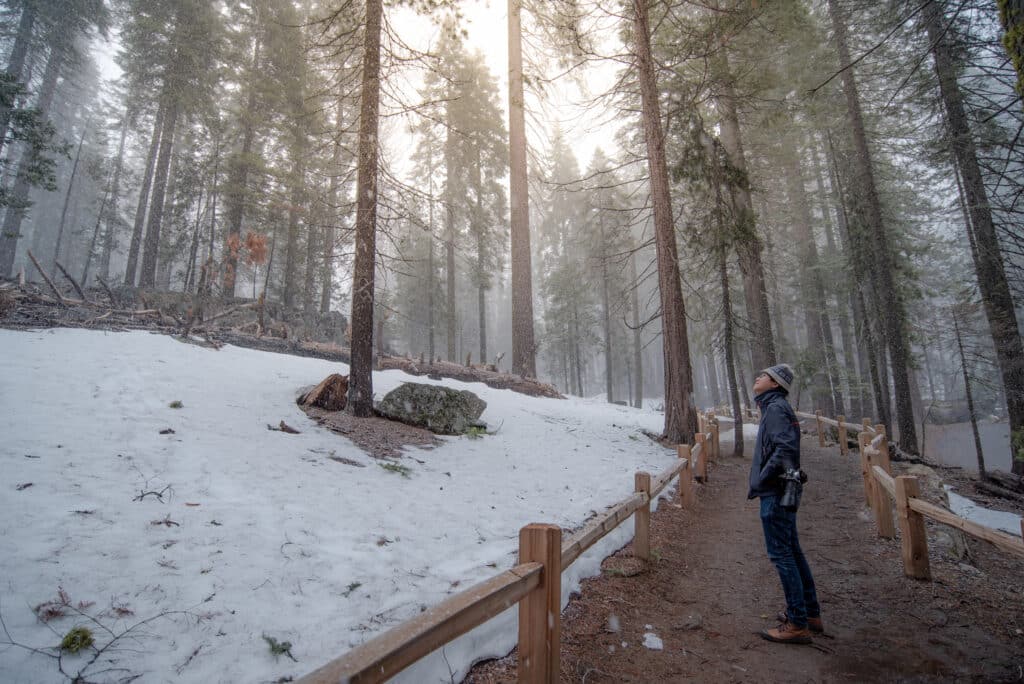
Yosemite National Park in winter is an extraordinary experience, offering a unique perspective of its stunning landscapes, tranquility, outdoor adventures, and an opportunity to enjoy the park in a more intimate and serene setting.
Yellowstone National Park
Yellowstone National Park is a remarkable destination to visit during the winter months due to several compelling reasons:
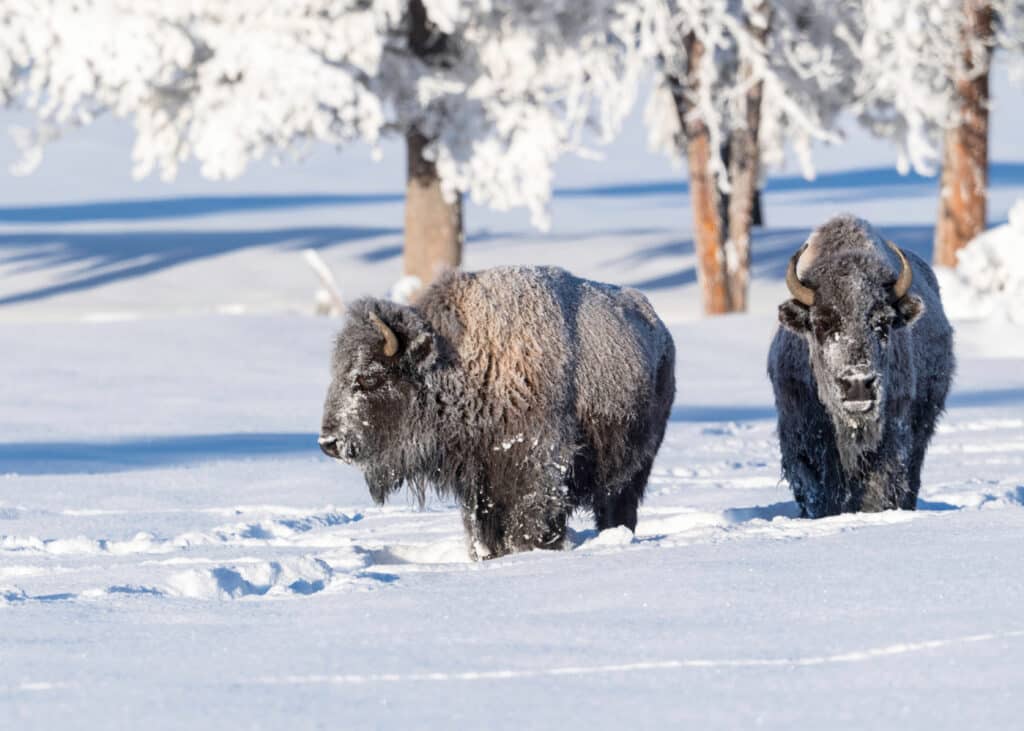
- Unique Winter Landscape: Yellowstone transforms into a breathtaking winter wonderland during this season. The park is blanketed in pristine snow, showcasing a different, ethereal beauty. Snow-covered landscapes, geyser basins, and frozen waterfalls create a picturesque and serene atmosphere.
- Thermal Features and Geysers: The geothermal features, such as geysers and hot springs, take on a mystical quality in winter. The steam rising from the thermal features juxtaposed against the snowy backdrop is a captivating sight and a unique photography opportunity.
- Wildlife Viewing: Winter is an excellent time for wildlife enthusiasts, as animals are more visible against the snowy terrain. Visitors can witness a variety of wildlife, including bison, elk, wolves, coyotes, and bald eagles, making for exceptional wildlife-watching experiences.
- Cross-Country Skiing and Snowshoeing: Yellowstone offers an extensive network of trails for cross-country skiing and snowshoeing. Exploring the park on skis or snowshoes allows visitors to access areas that are otherwise difficult to reach in other seasons, providing an unparalleled sense of adventure and solitude.
- Sleigh Rides and Snowcoach Tours: Sleigh rides and guided snowcoach tours offer a unique perspective of the park, allowing visitors to witness the park’s beauty in comfort. These tours often take visitors to iconic sights while providing insights into the park’s history and ecosystem.
- Peaceful and Tranquil Atmosphere: The winter season significantly reduces the number of visitors, offering a more peaceful and intimate experience with nature. The reduced crowds allow for a deeper connection with the park’s natural beauty and a quieter, more reflective visit.
- Ranger-Led Programs and Interpretive Talks: Yellowstone’s rangers conduct various programs and interpretive talks during the winter, providing valuable insights into the park’s ecology, geology, and history. These educational experiences enhance visitors’ understanding and appreciation of the park.
- Aurora Borealis Viewing: On clear nights, visitors have the rare opportunity to witness the mesmerizing display of the Northern Lights (Aurora Borealis). The park’s remote location and minimal light pollution make it an ideal spot for viewing this natural wonder.

Visiting Yellowstone National Park in winter offers a unique and captivating experience with its stunning winter landscapes, distinctive geothermal features, abundant wildlife, recreational activities, and an opportunity to enjoy the park’s tranquility and natural wonders in a more serene setting.
Rocky Mountain National Park
Rocky Mountain National Park is a captivating destination to visit during the winter months due to several compelling reasons:
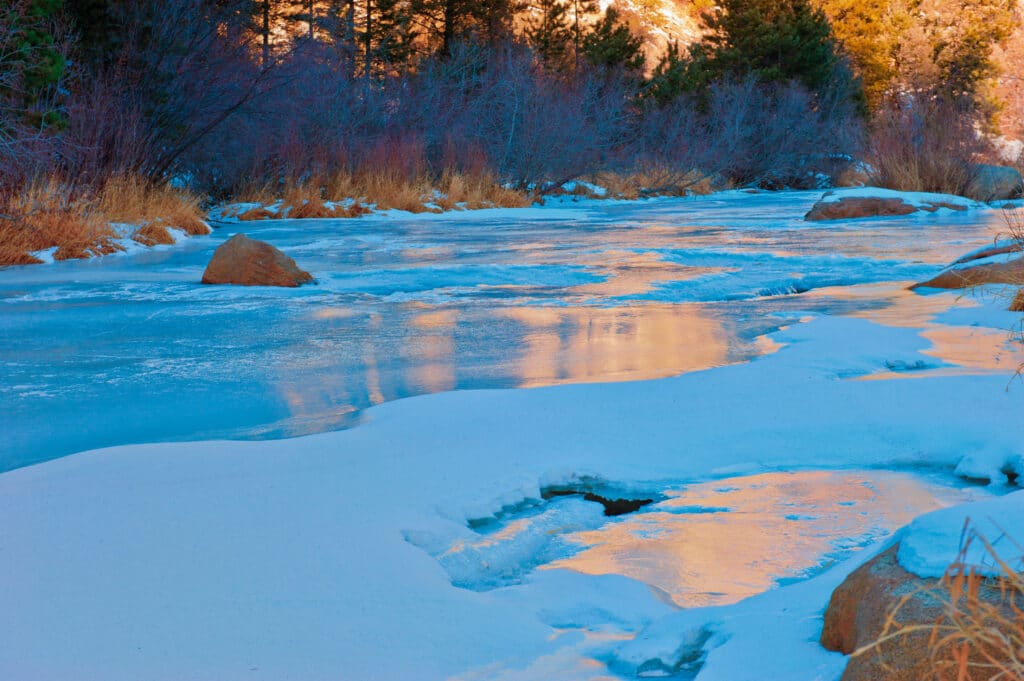
- Scenic Winter Beauty: The park’s natural beauty takes on a magical allure in winter. The majestic Rocky Mountains are draped in snow, creating a stunning and serene landscape. The contrast of snow against rugged peaks, frozen lakes, and snow-dusted pine trees offers a visually striking and picturesque setting.
- Abundance of Snow Activities: Winter enthusiasts can engage in a plethora of snow-related activities, including snowshoeing, cross-country skiing, ice climbing, sledding, and snowmobiling. The park’s varied terrain provides options for every skill level, making it an ideal destination for outdoor adventure and exploration.
- Tranquility and Solitude: Winter in Rocky Mountain National Park provides a quieter and more peaceful experience due to fewer visitors compared to the busy summer season. The tranquility allows for a more intimate connection with the park’s natural wonders and an opportunity to enjoy the peaceful ambiance.
- Wildlife Watching: While some animals hibernate or migrate, many wildlife species remain active in the park during winter. Observing animals like elk, mule deer, bighorn sheep, and various bird species against the snowy backdrop offers exceptional wildlife-watching opportunities.
- Photographic Opportunities: The soft, diffused light of winter, combined with the snow-covered landscape, creates exceptional opportunities for photography. From capturing breathtaking sunsets to showcasing the park’s diverse flora and fauna against the white canvas of snow, photographers will find an array of subjects to capture.
- Accessibility to Popular Trails and Views: Despite the snow, many popular trails and viewpoints remain accessible in winter. Key sites like Bear Lake, Sprague Lake, and Trail Ridge Road are often plowed, allowing visitors to enjoy the park’s iconic spots without the crowds typically seen in the warmer months.
- Ranger-Led Programs: The park offers ranger-led programs during the winter, providing educational experiences on topics such as wildlife, geology, and park conservation. These programs enhance visitors’ understanding and appreciation of the park’s unique ecosystem.
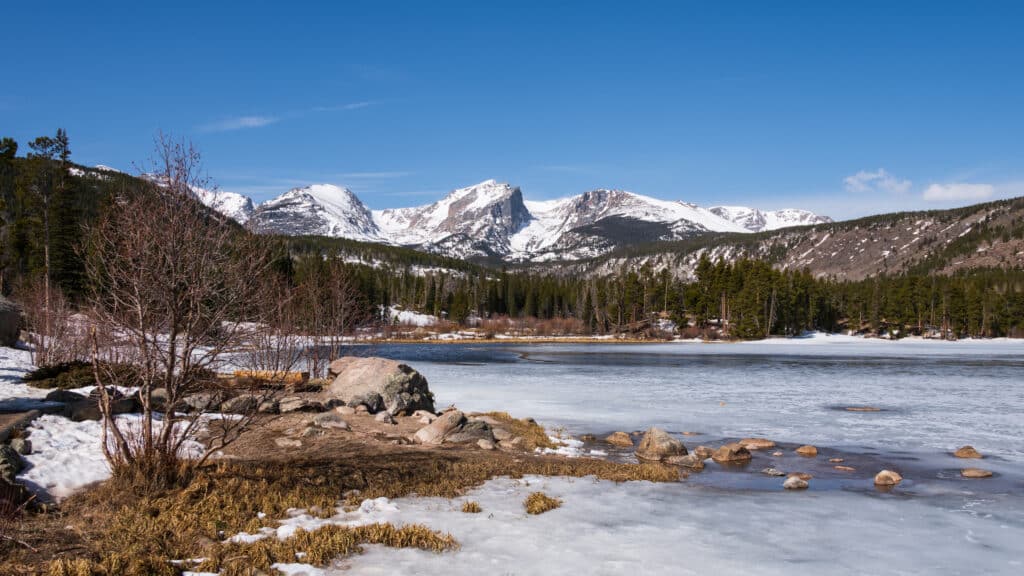
Rocky Mountain National Park in winter offers an enchanting blend of outdoor adventure, serene landscapes, wildlife encounters, photography opportunities, and educational experiences. Whether seeking solitude in nature or engaging in snow-filled activities, the park provides an unforgettable winter experience for all types of visitors.
Zion National Park
Zion National Park is an exceptional destination to visit during the winter months for several compelling reasons:

- Mild Winter Climate: Zion’s winter climate is relatively mild, making it an attractive winter destination. With daytime temperatures often ranging from 40-60°F (4-15°C), visitors can comfortably explore the park without extreme cold, allowing for an enjoyable outdoor experience.
- Spectacular Scenic Views: The park’s stunning red rock formations, narrow slot canyons, and expansive vistas take on a unique beauty during the winter. The contrast of snow against the red and orange sandstone formations creates a captivating and photogenic landscape.
- Reduced Crowds and Serenity: Compared to the busy summer season, winter brings fewer visitors to Zion National Park, providing a more tranquil and intimate experience. Visitors can appreciate the natural beauty of the park with fewer crowds and a sense of solitude.
- Hiking and Adventure Opportunities: Winter is an excellent time for hiking, with cooler temperatures making it pleasant for outdoor activities. While some trails may have icy or snowy sections, many popular trails remain accessible and offer breathtaking views of the winter scenery.
- Unique Wildlife Sightings: Winter allows for unique wildlife sightings, as animals such as bighorn sheep, mule deer, and eagles are more visible against the snow. The opportunity to observe and photograph these animals in their natural habitat enhances the overall experience.
- Photography Opportunities: The winter light and the contrast of the snow against the red rock create exceptional photographic opportunities. Photographers can capture the dramatic interplay of light and shadow on the park’s iconic formations, providing stunning imagery.
- Rock Climbing and Canyoneering: For adventure seekers, winter offers excellent conditions for rock climbing and canyoneering. The cooler temperatures make these activities more enjoyable, allowing climbers and canyoners to tackle challenging routes and explore Zion’s unique terrain.
- Ranger-Led Programs and Events: The park offers ranger-led programs and events during the winter, providing educational opportunities about the park’s geology, ecology, and cultural history. These programs enhance visitors’ understanding and appreciation of Zion National Park.
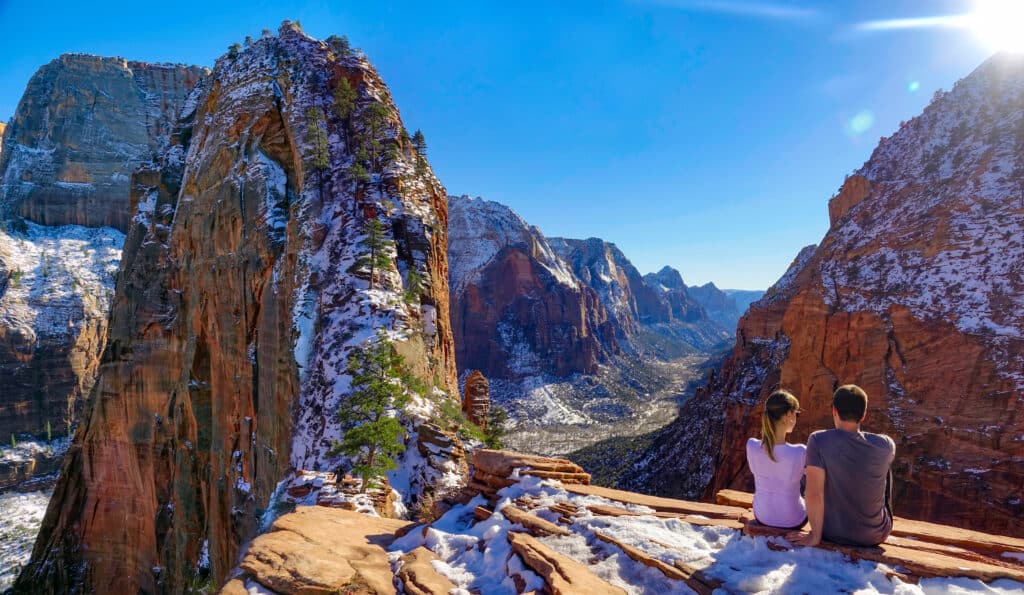
Zion National Park in winter offers a wonderful blend of mild weather, stunning scenery, outdoor adventure, wildlife encounters, photography opportunities, and educational experiences. Whether exploring the trails, capturing the beauty through a lens, or enjoying the tranquility of the park, a winter visit to Zion is sure to be a memorable and rewarding experience.
Conclusion
Embarking on a winter adventure to the renowned national parks of Yosemite, Yellowstone, Rocky Mountain, and Zion unveils a world of natural splendor and outdoor activities unlike any other. Each park transforms into a serene and enchanting winter wonderland, with landscapes adorned in snow, offering a picturesque and tranquil ambiance.
From the quietude of winter trails to the chance to witness wildlife against the snowy backdrop, these parks provide a unique and immersive experience for those seeking beauty and adventure in the colder months. Whether exploring snow-covered vistas or engaging in exciting winter activities like snowshoeing and cross-country skiing, the parks offer a true escape into the beauty of the natural world.
These winter visits present an opportunity to appreciate the remarkable diversity and breathtaking views that characterize these national treasures, leaving indelible memories and a profound appreciation for the wonders of nature.


